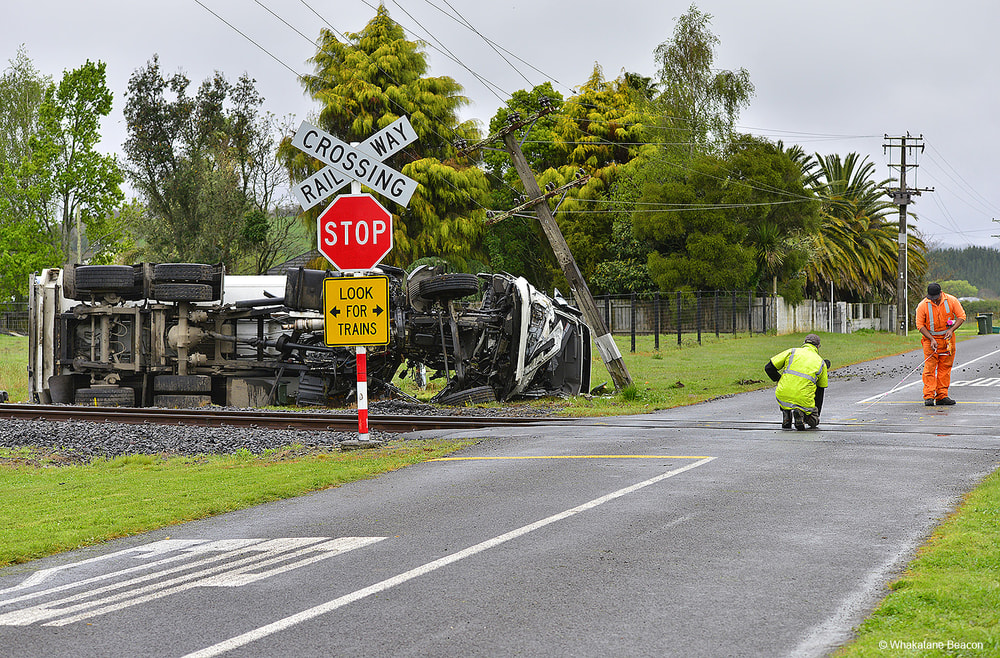A collision between a heavy vehicle and a train at a level crossing poses the biggest risk to human life.

These collisions are also more likely to derail a train and cause the greatest damage to road and railway infrastructure.
Driving Rules for Heavy Vehicles (from the NZ Road Code)
A railway level crossing is a point where the road crosses over a railway line. This means you drive over the railway tracks and could come into the path of a train. Because of this, you need to be very careful around railway level crossings to avoid a very serious crash.
When you see a railway level crossing sign
- slow down and be ready to stop, or stop if legally required (see below)
- as you come up to the railway crossing, search up and down the railway line. You will need to search further up the railway line, as trains often travel at a higher speed than vehicles on the road
- only if you are sure there are no trains coming in either direction and there are no vehicles stopped in front of you on the other side of the crossing.
At railway level crossings controlled by signals, bells and barrier arms:
- You must stop if the signals have started flashing, the bells have started ringing and/or the barrier arm has started to lower.
- Don’t cross until the barrier arms have lifted, the lights have stopped flashing and the bells have stopped ringing.
At railway level crossings controlled by a Stop sign or Give Way sign
- make sure you can see in both directions along the railway line
- if there is a Stop sign, come to a complete stop before the railway line (there will usually be one or two yellow lines showing you where to stop)
- if there is a Give Way sign, and you are driving a vehicle that is required to stop (see below), come to a complete stop before the railway line
- only cross the railway line if you are sure that there are no trains coming in either direction and there are no vehicles stopped in front of you on the other side of the crossing
- take extra care if there is more than one railway line.

Important rules for some heavy vehicles
You must come to a complete stop at railway level crossings that are uncontrolled or are controlled by Give Way or Stop signs if you are driving:
- a passenger service vehicle with passengers for hire or reward (with or without goods), or
- a heavy motor vehicle carrying dangerous goods.
If you are driving one of the above vehicles, you do not need to automatically stop if an enforcement officer is controlling the railway level crossing, or where the crossing has barrier arms and/or red flashing signals.
Important safety advice for railway level crossings
- Never try to cross the railway line unless there is enough space for your vehicle on the other side of the line.
- Never pass a vehicle that has stopped for a train.
- Always take extra care if there are two sets of railway tracks – trains can come from either direction
- Never try to race a train over the crossing – trains are usually travelling faster than they appear
- Get into the practice of turning off radios and winding down windows when approaching a level crossing
Train Control Emergency Number
If you notice a problem with a level crossing or are stuck on a level crossing call the Train Control Emergency Number 0800 808 400. (This number is only to be used in emergencies).

 track
track